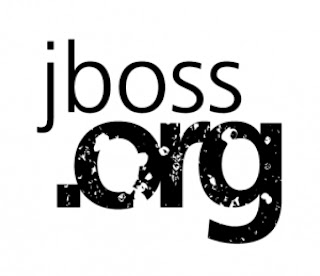Archive for June 2012
Configuring IBM MQ in JBoss

In today's post I will explain how to install the WebSphere MQ resource adapter on JBoss.
Installing WebSphere MQ resource adapter:
To install WebSphere MQ resource adapter, copy the file wmq.jmsra.rar (from installation directory) to the server's deploy directory, for example <install path>/server/default/deploy The resource adapter will be automatically picked up by the server.
Installing the WebSphere MQ Extended Transactional Client:
The WebSphere MQ Extended transactional client lets you use XA distributed transactions with CLIENT mode connections to a WebSphere MQ queue manager. To install it on JBoss, copy the file com.ibm.mqetclient.jar ( from installation directory ) to the server lib directory, for example <install path>/server/default/lib.
Configuring the resource adapter for your application:
The WebSphere MQ resource adapter lets you define a number of global properties. Resource definitions for outbound JCA flows are defined in a JBoss -ds.xml file named wmq.jmsra-ds.xml. The outline form of this file:
As can be seen above JCA connection factories are defined in the <tx-connection-factory> element and JMS queues and topics are defined as JCA administered object mbeans.
A complete example for our sample application defining two queues - inbound and outbound is given below:
The place holder properties are defined in the JBoss start script as:
-Dchannel=MQTEST -DhostName=localhost -DqueueManager=TST_MGR
Configuring inbound message delivery:
Message delivery to a Message-Driven Enterprise JavaBean (MDB) is configured using a JBoss-specific file named jboss.xml, located in the MDB .ear file. The contents of this file will vary, but will be of the form:
jboss.xml:
The DestinationType and Name properties must be specified. Other properties are optional, and if omitted, take on their default values.
A simple MDB definition for the inbound message is shown below:
A plain java class to send message to the output queue is shown below.
That's all.
Installing WebSphere MQ resource adapter:
To install WebSphere MQ resource adapter, copy the file wmq.jmsra.rar (from installation directory) to the server's deploy directory, for example <install path>/server/default/deploy The resource adapter will be automatically picked up by the server.
Installing the WebSphere MQ Extended Transactional Client:
The WebSphere MQ Extended transactional client lets you use XA distributed transactions with CLIENT mode connections to a WebSphere MQ queue manager. To install it on JBoss, copy the file com.ibm.mqetclient.jar ( from installation directory ) to the server lib directory, for example <install path>/server/default/lib.
Configuring the resource adapter for your application:
The WebSphere MQ resource adapter lets you define a number of global properties. Resource definitions for outbound JCA flows are defined in a JBoss -ds.xml file named wmq.jmsra-ds.xml. The outline form of this file:
As can be seen above JCA connection factories are defined in the <tx-connection-factory> element and JMS queues and topics are defined as JCA administered object mbeans.
A complete example for our sample application defining two queues - inbound and outbound is given below:
jms/MyAppConnectionFactory wmq.jmsra.rar true javax.jms.QueueConnectionFactory 8 36 ${channel} ${hostName} 1414 ${queueManager} CLIENT munish JmsXARealm jms/IncomingQueue jboss.jca:name='wmq.jmsra.rar',service=RARDeployment javax.jms.Queue baseQueueManagerName=${queueManager} baseQueueName=MY.APP.INBOUND.QUEUE jms/OutgoingQueue jboss.jca:name='wmq.jmsra.rar',service=RARDeployment javax.jms.Queue baseQueueManagerName=${queueManager} baseQueueName=MY.APP.OUTBOUND.QUEUE
The place holder properties are defined in the JBoss start script as:
-Dchannel=MQTEST -DhostName=localhost -DqueueManager=TST_MGR
Configuring inbound message delivery:
Message delivery to a Message-Driven Enterprise JavaBean (MDB) is configured using a JBoss-specific file named jboss.xml, located in the MDB .ear file. The contents of this file will vary, but will be of the form:
jboss.xml:
MyMessageBean DestinationType javax.jms.Queue destination MY.APP.INBOUND.QUEUE channel ${channel} hostName ${hostName} port 1414 queueManager ${queueManager} transportType CLIENT username munish wmq.jmsra.rar
The DestinationType and Name properties must be specified. Other properties are optional, and if omitted, take on their default values.
A simple MDB definition for the inbound message is shown below:
/**
* This message driven bean is used to collect asynchronously received messages.
*
* @author Munish Gogna
*/
@MessageDriven(mappedName = "jms/IncomingQueue")
public final class MyMessageBean implements javax.jms.MessageListener {
private static final org.apache.log4j.Logger LOGGER = org.apache.log4j.Logger.getLogger(MyMessageBean.class);
public void onMessage(final javax.jms.Message message) {
LOGGER.info("Received message: " + message);
// TODO - do processing with the message here
}
}
A plain java class to send message to the output queue is shown below.
/**
* This class is used to send text messages to a queue.
*
* @author Munish Gogna
*/
public final class MessageSender {
private static final org.apache.log4j.Logger LOGGER = org.apache.log4j.Logger.getLogger(MessageSender.class);
/**
* A coarse-grained method, nothing fancy. In actual applications please re factor the code and
* handle the exceptions properly.
*
* @throws Exception
*/
public void send(final String message) throws Exception {
if (message == null) {
throw new IllegalArgumentException("Parameter message cannot be null");
}
javax.jms.QueueConnection connection = null;
javax.jms.Session session = null;
try {
javax.naming.Context fContext = new javax.naming.InitialContext();
javax.jms.QueueConnectionFactory fConnectionFactory = (javax.jms.QueueConnectionFactory) fContext
.lookup("java:jms/MyAppConnectionFactory");
connection = fConnectionFactory.createQueueConnection();
session = connection.createSession(false, javax.jms.Session.AUTO_ACKNOWLEDGE);
final javax.naming.Context jndiContext = new javax.naming.InitialContext();
final javax.jms.Destination destination = (javax.jms.Destination) jndiContext.lookup("jms/OutgoingQueue");
final javax.jms.MessageProducer messageProducer = session.createProducer(destination);
final javax.jms.TextMessage textMessage = session.createTextMessage(message);
messageProducer.send(textMessage);
messageProducer.close();
} catch (Exception nex) {
throw nex;
} finally {
if (session != null) {
try {
session.close();
} catch (JMSException e) {
LOGGER.error("Failed to close JMS session", e);
}
}
if (connection != null) {
try {
connection.close();
} catch (JMSException e) {
LOGGER.error("Failed to close JMS connection", e);
}
}
}
}
}
A utilty called RFHUTILC.EXE can be used to connect to remote queues.That's all.




